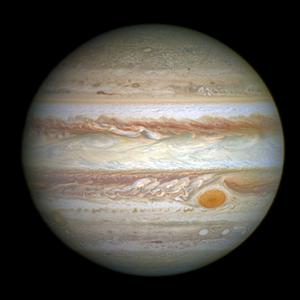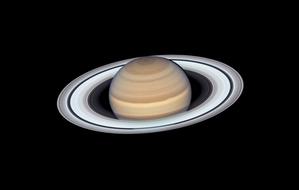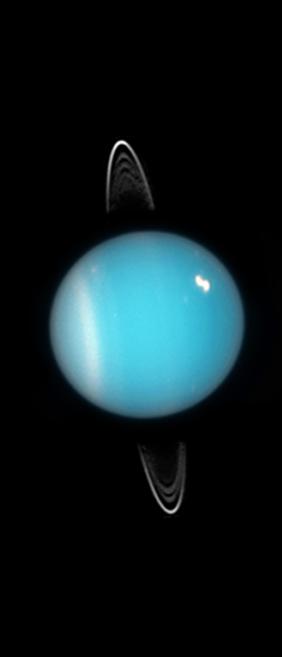Glossary term: Giant Planet
Description: A giant planet is a large body mostly composed of hydrogen, helium, or more complex molecules such as water, methane, or ammonia. While a terrestrial planet is mostly composed of material with a very high boiling point such as iron or rock, giant planets are thought to have a solid core surrounded by other material. The mass of a giant planet is substantially higher than that of Earth, so its gravity is strong enough to retain the extended gaseous atmosphere made up of light elements like hydrogen and helium.
Giant planets fall into two categories: gas giants which are mostly made up of hydrogen and helium, and ice giants which are mostly made up of water, methane, and ammonia surrounded by an atmosphere of hydrogen and helium. In both cases the names can be confusing as most of the material in gas giants is not in a gaseous state and ice giants do not contain solid ice, rather material that was frozen in the cold outer Solar System before it was accreted onto the planet.
The four largest planets in the Solar System (Jupiter, Saturn, Neptune, and Uranus) are all giant planets.
Related Terms:
See this term in other languages
Term and definition status: This term and its definition have been approved by a research astronomer and a teacher
The OAE Multilingual Glossary is a project of the IAU Office of Astronomy for Education (OAE) in collaboration with the IAU Office of Astronomy Outreach (OAO). The terms and definitions were chosen, written and reviewed by a collective effort from the OAE, the OAE Centers and Nodes, the OAE National Astronomy Education Coordinators (NAECs) and other volunteers. You can find a full list of credits here. All glossary terms and their definitions are released under a Creative Commons CC BY-4.0 license and should be credited to "IAU OAE".
Related Media
Jupiter
Credit: NASA, ESA, and A. Simon (Goddard Space Flight Center) credit link
License: CC-BY-4.0 Creative Commons Attribution 4.0 International (CC BY 4.0) icons
Saturn
Credit: NASA, ESA, A. Simon (Goddard Space Flight Center), and M.H. Wong (University of California, Berkeley) credit link
License: CC-BY-4.0 Creative Commons Attribution 4.0 International (CC BY 4.0) icons
Uranus in natural colours
Credit: NASA/JPL-Caltech credit link
License: PD Public Domain icons
Uranus with rings
Credit: NASA, ESA, and M. Showalter (SETI Institute) credit link
License: PD Public Domain icons
Neptune
Credit: NASA / JPL / Voyager-ISS / Justin Cowart credit link
License: PD Public Domain icons













